The biggest, baddest console The Captain has ever tested in Australia!
The Grady-White Canyon 376 is a bona fide heavyweight of centre consoles. It’s the biggest hull in the Grady-White range, tipping the scales at almost six tonne (without engines). The beam is wider than the average tinnie at 4.01m. In Australian waters, no other console touches those numbers, not on The Captain’s tested list, anyway. The biggest console we’ve tested is the Edgewater 245 — and that came in at a teeny-weeny 1.6 tonne.
When Sydney Grady-White dealer Sam Short from Short Marine reached out to The Captain’s crew for an opinion on the Grady, we readily agreed — on one condition: we had to lay down a time for the fastest run to The Continental Shelf. Now, we know what you’re thinking. That this was just a ruse to get us to the blue marlin grounds — and we were just taking advantage of Sam’s kind and affable nature. That may well be true, but here’s the thing: if we ever put a stopwatch on a shelf run, this would be it.
We met at Sydney Heads, 900 Yammahorses grumbling at the start line. A collection of virgin Tiagras twinkled in the morning sunlight. Four svelte young men rode aboard, three sitting abreast on cream coloured leather seats, cut from the hide of free-roaming Scandinavian calves (or so we imagined). Ryan Short (Sam’s brother) sat in the middle helm seat, his staunch face wrapped in Ray-Ban. He dropped the throttles and the behemoth roared up to 42 knots, not even breaking stride for the rollers coming through the heads. The race to the shelf was on.
STEAMROLLER OF THE SEA
Grady-White is renowned for a smooth and soft ride, with a design attributed to the immortal Charles Raymond Hunt (see sidebar over page). In simple terms: they got the right angles in all the right places. The deadrise extends all the way to midships then tapers to a moderate 20 degrees at the bum. It’s not so flat that it wanders, and it’s not so sharp that it rolls. The timber-free, hand-laid hull is an absolute rock at speed or at rest. With a seven-tonne mass (hull and motors) the 376 becomes a veritable steamroller of the sea. Heading home in a stiff, 25-knot north-easterly, the Canyon tracked perfectly straight, never burying the bow, even at full noise. The boys sitting in the bow section barely took a drop. Even after a whole day at sea, this boat won’t beat you up at all.
THE TANNING ZONE
Stepping aboard through the side door on the Canyon you can choose your own adventure. Upfront in the tanning zone (commonly known as “the bow”) there’s a dinette with portable table and horseshoe seating. Six can comfortably sit around the table (or maybe eight marathon runners). Remove the table and slot in a fibreglass platform for casting or sun-baking. Under the front seating is a pair of 250L kill tanks. There’s also a seat in front of the console with a kill tank under it. All tanks drain to the sea, rather than the bilge, perfect for keeping the deck free of slippery tuna blood. Downstairs, there’s a sumptuous powder room (aka cabin) bigger than The Captain’s headquarters. It features a stand-up shower with a 23L water heater, a VacuFlush head plumbed to a 38L holding tank with overboard pump-out, TV, airconditioner, fridge, microwave, slide-out galley and convertible double bed. Midday siestas have never been so good in a centre console while extended touring would be a piece of piss. With a 1500L fuel tank, The Captain could make it all the way from Sydney to the Gold Coast on just one tank.
THE FISHING ZONE
The fishing zone out back on the deck is full of versatile features. The rear bench seat folds down for cruising. Folded up, you can nuzzle your hips into the transom for bottom slaying or trolling. In the centre of the stern is a mammoth 275L, digitally controlled, refrigerated fish-box with twin lights and overboard drain. It’s perfect for ice or a couple of 50kg yellowfin. There’s a bait station behind the helm seat with twin, contoured, 155L live-bait tanks either side of a drop-down rigging station. The finished toe-rails on the deck blend in nicely and fishos will be glad of them when fighting offshore sea monsters. There are outriggers, but you barely need them. With a 4m-plus beam we comfortably ran a five-lure spread. We didn’t land a big one, but if we did, we’d have had the option of bringing it through the inward-opening side dive door or the outward-opening transom door (it opens that way to expel water in a hurry if necessary).
THE CONTROL ZONE
Every appointment on the 376 is exceptional — and particularly noticeable around the helm. The three leather seats have adjustable bolsters, armrests and footrests. You can stand, lean, sit, sleep or reverse cowgirl at almost any angle. Behind the helm, you look forward through to a pair of 16-inch Garmin screens that fold down out of sight at the push of a button. Forward of that is the tempered glass windscreen with an electric-powered window to let cool air in. That’s of course if you don’t want the air-conditioning flowing through vents either side of the console. The fittings and hardware are first-class, everything is recessed and the edges are all smoothed off like a baby’s bum. These boats are clearly built for conscientious fishing folk.
THE PARTY ZONE
The layout has the vibe of a beer garden and the beer-drinking efforts on our test day certainly lived up to that reputation. There are areas for socialising up front, down back and in the middle. There are chill-out zones downstairs and there’s even a BBQ cooking zone in the form of an electric grill in the middle of the rigging station. Finding a spot to place your beer isn’t a problem, either, with 22 (count ’em) stubby holders. And no matter where you are on the Canyon, your body throbs to the beat of the Fusion MSUD750 with amplifier, Bluetooth and eight speaker stereo system.
The Grady White console breaks all the rules for traditional console boats. It’s dry. You can sleep on it and you can party like it’s 1999 in almost any weather conditions. In fact, we’re retiring from testing centre consoles because we’ve hit the rev limiter with the Canyon 376. Speaking of revs, we hit the shelf from Sydney harbour in only 22 minutes and 40 seconds travelling at 6000RPM doing 42 knots. Now there’s a challenge for all you Cootacraft owners.
C. RAYMOND HUNT (1908–1978)
The name Charles Raymond Hunt echoes through boat building yards like the name Bradman echoes through Aussie cricket clubs. When it came to boat design in the 1950s and ’60s, C-Ray had shark-like instincts. The tank tests and algorithms just couldn’t keep up with him. He had no formal education, but still managed to design sailboats and powerboats that won international championships and Olympic gold medals, even skippering boats of his own design to world championships.
He’s responsible for developing the high deadrise deep-vee hull featured in hulls such as Bertram, Boston Whaler, Wellcraft, Huntsman and, of course, Grady-White. His design is accepted as the ultimate hull form for speed, comfort and safety in the rough stuff. Instinctively, he knew the best angle for deep-vee race boats should be about 24 degrees at the transom; lower for fast touring or cruisers. He developed sharp bows to reduce pounding and also figured out that a wide flared-bow section holds buoyancy, reducing the potential for burying the nose or taking solid water over the front.
He developed a bell-shaped vee bottom that rode softer than a sharp one. His designs extended the vee all the way down the length of the hull and the boats responded by travelling through any sea at any angle with minimal steering effort. He mastered the variable deadrise (sharper at the front and flatter at the rear) finding the best compromise of speed and stability. Chine and strakes were introduced to knock down spray and stop water from climbing the side of the boat, thereby reducing the wetted surface area on the hull. They also provided lift and steerage. These elements reduced resistance, creating greater speed and economy. The deep-vee design also proved inherently stable. As the hull rolled, the deep-vee put more hull into the water, forcing it back upright. Boats could now bank into turns rather than roll outward like the round or flatbottomed hulls of the day. The records dropped and boats got faster and faster. Every time you’re punching into a big sea in your deep-vee hull, spare a thought for C Raymond Hunt. The Captain salutes you, C-Ray!

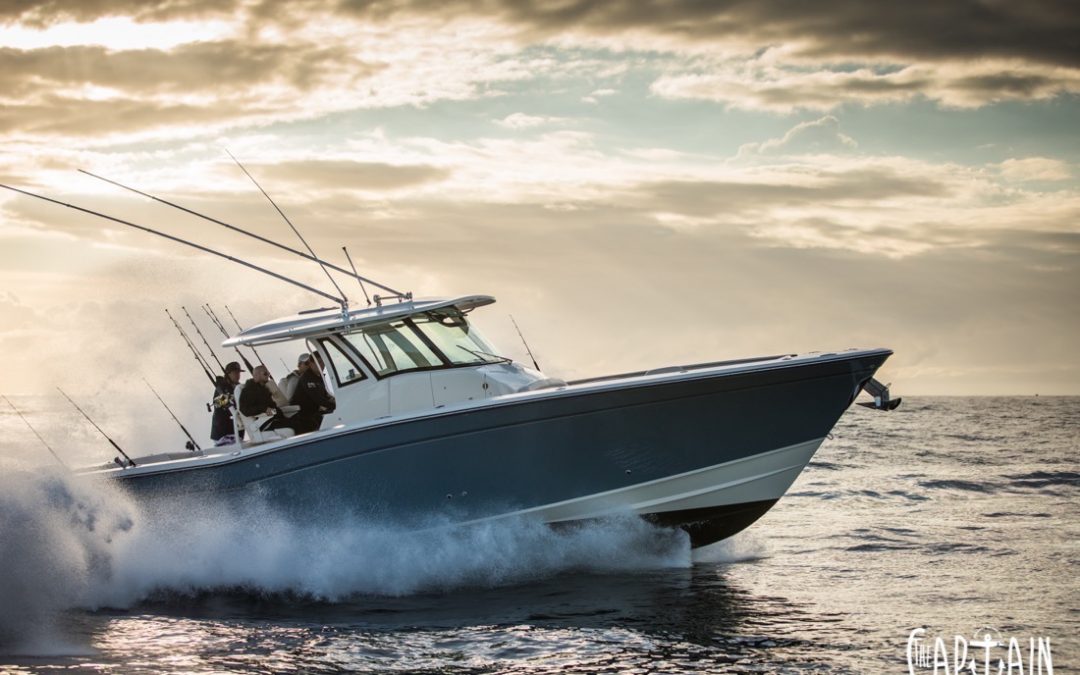


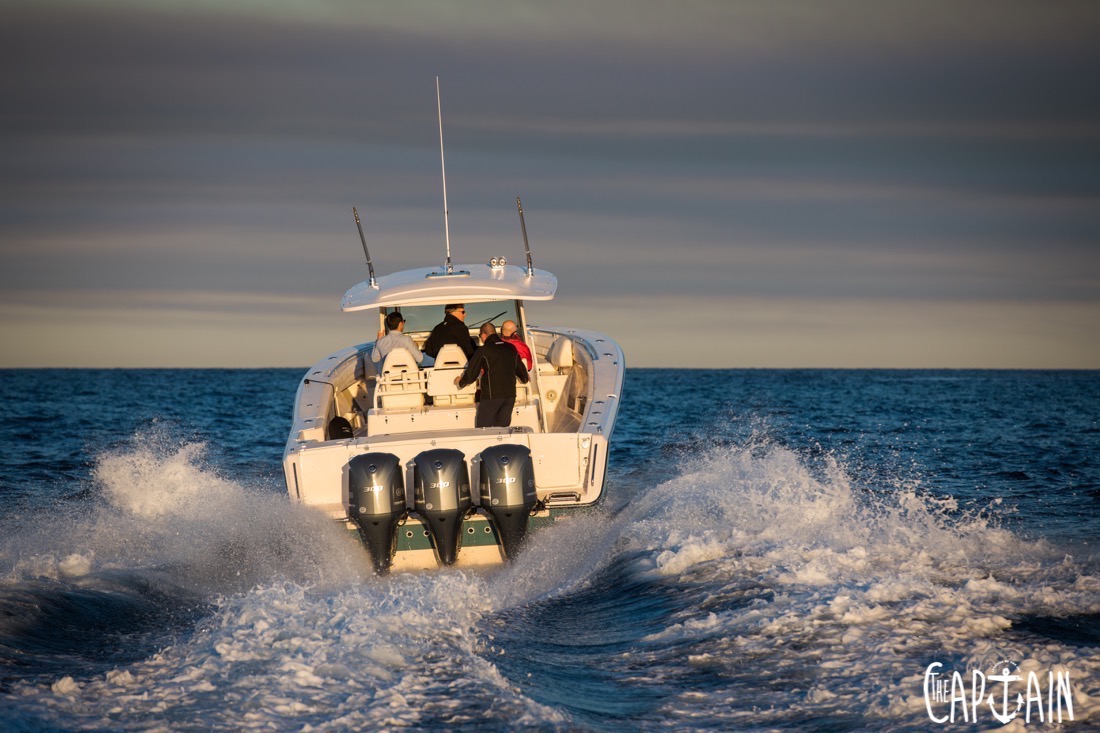





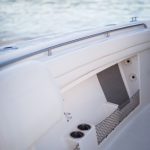
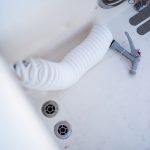

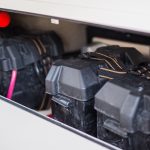
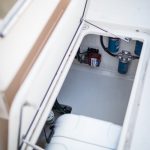
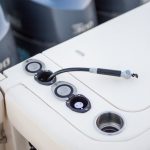
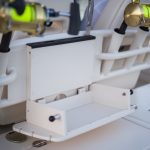
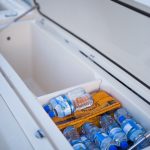
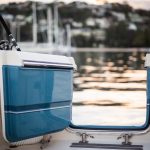
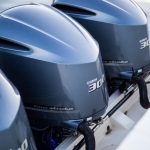
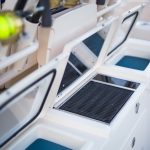
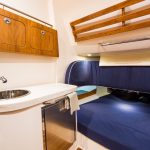
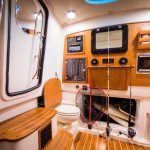
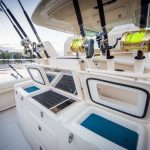

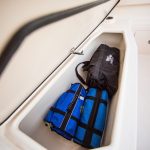
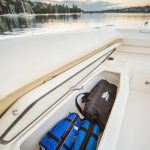
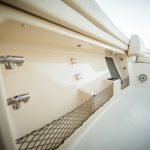
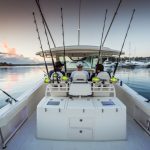
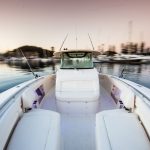
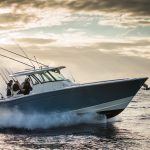
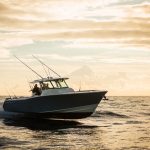
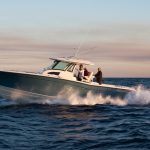
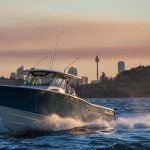
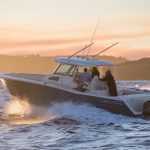
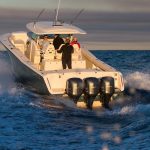
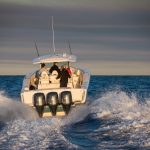
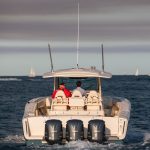
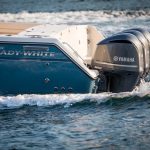
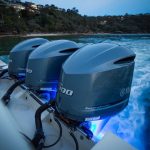
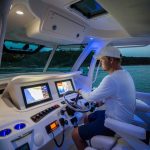
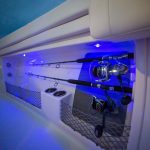
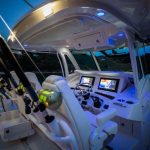
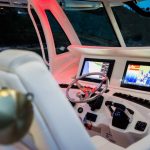
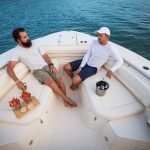
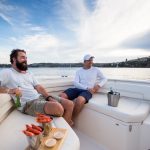
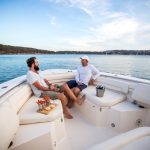
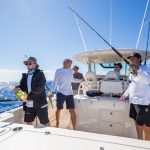
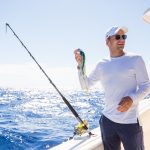


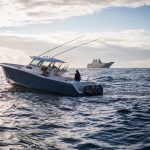
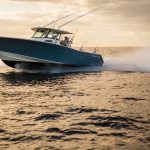
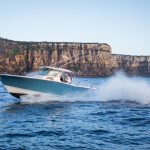
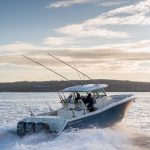
Recent Comments